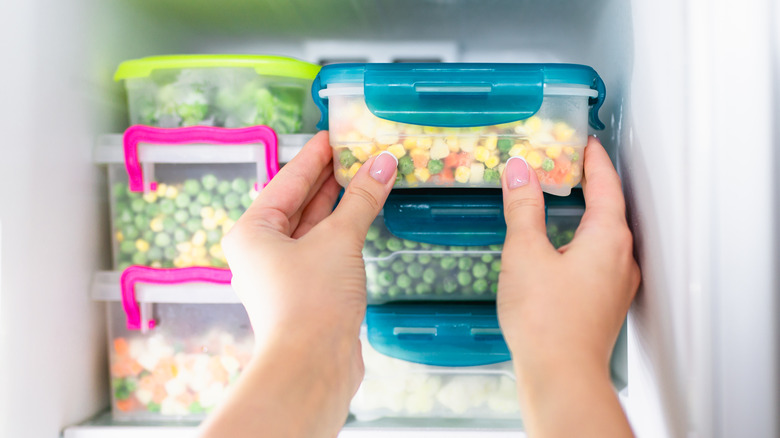Ina Garten's Tip For Freezing Leftovers Fast
Ina Garten celebrates 20 years of her cooking show, "The Barefoot Contessa," this year, and if there's anyone to take cooking and food prep tips from seriously, it's this beloved food maven. Whether you're cooking casseroles to sustain you through the coming months or regularly prep and store individual meals, the freezer is your best friend when it comes to stockpiling make-ahead meals, which is something Garten knows very well. While freezing pre-made dinners and leftovers is a great way to get more from your meals, making sure you prep and store your food safely is key.
To safely freeze food, you'll want to follow a few standard practices, per Allrecipes. Make sure food is cooled to room temperature, use freezer bags or containers with air-tight lids, and always date your items. Additionally, make sure the temperature of your freezer is at zero degrees Fahrenheit (or cooler) to store your food safely. And avoid making the mistakes nearly everyone makes with frozen food by following this pro tip from the Barefoot Contessa.
Do this to help food freeze quicker
When you put leftover food containers in the freezer, don't stack them until they're fully frozen, as this will help them freeze quicker, according to Garten's Instagram. When freezing soups or sauces, she also advises leaving extra space in the container to allow liquids to expand when they freeze. Most household freezers completely freeze food within two to 24 hours, per the Washington Post, so a good rule of thumb is to wait a day to stack your containers after placing them in the freezer.
Even better, save space in your freezer while freezing food quickly by using flat freezer bags instead of clunky plastic containers. Thick, silicone freezer bags are reusable and might be your best bet in preventing freezer burn, according to the New York Times. And remember, some foods freeze better than others. Casseroles, soups, stews, stocks, grains, and doughs are all freezer-friendly, per Food Network, while things like cream-based sauces, salads, and slaws don't fare well in sub-zero temperatures.

